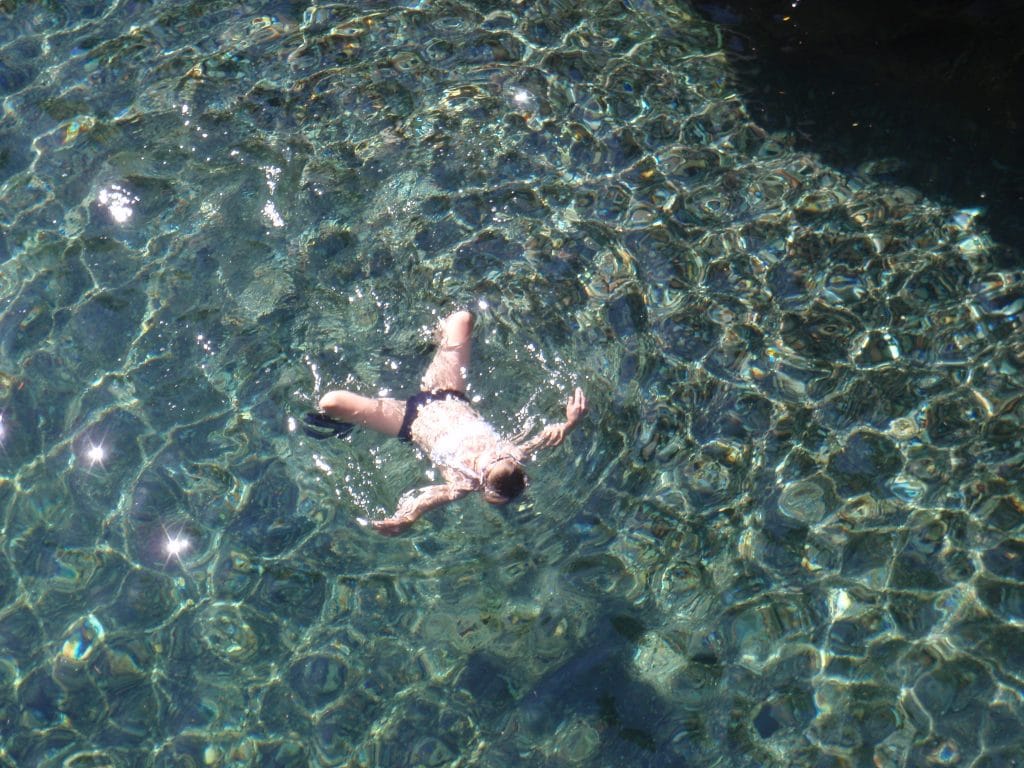Non- Doing On Your Back Helps Your Other Strokes…
If you want to improve any stroke, try practising this one. We call it the ‘Old English’. It’s an easy, efficient stroke where you can learn everything you need to know to improve your other strokes.
Learn to identify the 3 elements of a stroke – the glide, the soft lazy phase and the moment of sweep. These elements are there in all strokes. When you can identify them, you can find the slow phase and slow it down even more – it’s the part of the stroke you don’t want the water to know you’re doing! (In more technical terms it would be the ‘recovery’). The looser and softer the recovery, the more effective the sweep. And the more effective the sweep and glide, the easier it’ll be to soften and loosen again.
Learn to wait – We tend to think ahead and rush our way through a stroke, wanting to ‘do’ the next thing. On your back, from the glide, you just have to soften and the arms will drift out and the hips will drop allowing the legs to bend (that’s half the stroke done!) Wait again, the stroke will tell you when you need to sweep to get yourself going again.
Learn a change of tempo – If you allow it all to get too lazy and relaxed, the stroke will become inefficient. You need to wake it up with the sweep but then switch off again and settle down during the glide. You can’t have one without the other!
Learn to use your extremities – Keeping the effort away from the head, neck, back. Head leading, hands and feet sweeping – away from your head (the larger muscles of upper arms and thighs staying soft). If you put too much muscle into the movement, you’ll tighten around the neck and shoulders and around the pelvis and upset your balance/buoyancy.
Learn to let the air in and out – The breathing is always the bit that causes some anxiety. The question to ask is: are you holding yourself up to breathe or allowing your weight to rest in the water. On your back you can relax a bit about the breathing so you have an opportunity really to see what’s going on. As you let your arms and legs drift during the recovery stage, think about opening and widening, especially around the back and ribs. A natural in-breath! The air just wants to come out as you sweep the hands and feet to create the next glide.
Learn direction – what really makes the stroke work is simply thinking where you want to go and letting your head lead the way.
Learn rhythm – you can think of it like a dance!!
Slowly, slowly, slowly, swish and gli i i i i de,
Slowly, slowly, slowly, swish and gli i i i i de,
Slowly, slowly, slowly, swish and gli i i i i de..


